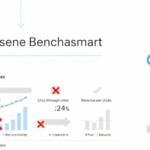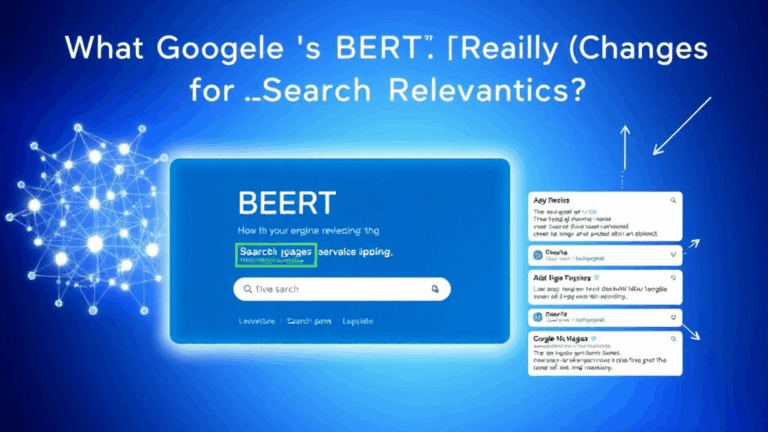What AdSense Keyword Research Misses Across Cultures
When English Metrics Don’t Map To Local Intent
People still treat English keyword performance like a universal benchmark. I’ve worked with publishers running bilingual sites — say, English and Turkish — and the assumption was always that the Turkish side would just map to English traffic patterns, scaled down. Nope.
In one case, the Turkish version of a parenting blog had way higher engagement on recipes than parenting advice — the opposite of its English twin. The content team kept prioritizing parenting advice because the English side monetized better on direct search CPC. What they didn’t get was: Turkish readers weren’t searching “toddler milestones.” They were Googling “kıymalı makarna nasıl yapılır” (basically: minced meat pasta recipe).
The kicker: these local food search terms don’t occur at all in the English language AdSense or Search Console panels. You have to pull Search Console by specific subfolder or subdomain and filter by country before any of that comes out.
Why Translation Isn’t The Same As Localization
I had someone once try to generate Spanish keywords for a Mexican fitness blog based on U.S. Spanish-language fitness terms. Big miss. Terms like “pesas rusas” (kettlebells) and “entrenamiento funcional” get very different regional attention — even within Latin America.
Here’s the thing: Google Ads keyword planner might return a Spanish query showing high search volume, but it doesn’t note which Spanish. Castilian and Argentine Spanish are not interchangeable, and Mexican slang doesn’t map to Colombian intent. And yet all these get lumped into the same “language” bucket in Google’s tools.
Undocumented quirk: If you’re using Google Keyword Planner in English UI, but adding keywords in Spanish or French, you sometimes get wildly flat volume estimates or even zeroes. Switch the UI language to the target language and relaunch the query — different results entirely. Seems like a front-end modeling bug.
CTRs Don’t Survive Cultural Jumps
One of the things that broke my brain for a while was Croatian finance keywords that ran conversion-heavy on desktop… but absolutely died on mobile. Same keyword, same SERP, two devices, radically different user behavior.
It wasn’t UX. It wasn’t ad placement. It was cultural — users in that region don’t trust financial material on mobile. They’ll click it, bookmark, and open it later on desktop. Most of the conversions were happening hours later on separate sessions. Which means if you’re analyzing CTR and conversion inside that first hit window, it looks like your campaign sucks when it’s actually delayed intention.
Google Analytics 4 makes this worse by removing the clarity of individual session behavior. You need to track user paths across devices — which you can’t reliably do without login-specific data. Which most ad publishers… don’t have.
Pseudo-Keywords From Autocomplete Biases
A weird thing I saw while exploring Korean search patterns is that a lot of traffic-driving queries are basically auto-complete accidents. Like, someone typing “best crypto…” in Hangul gets steered by predictive typing into queries like “비트코인 현재 가격 전망” (roughly: bitcoin current price outlook) — which were spiking in Google Trends even when no one was writing content targeting that exact string.
There’s no native support in AdSense or Search Console for capturing these longer predictive strings until they drive multiple sessions. So if you’re planning content based on volume, you’re late. But if you watch auto-complete trends in-market via localized VPNs and isolate what suggestions pop up based on partial queries, you can get ahead of it by a week or more.
Quick tactics that worked (sometimes badly, often expensively):
- Run auto-complete tests inside mobile-focused browsers using local IPs — Brave + VPN gave usefully different suggestions from Chrome.
- Use Google Trends with regional filters AND local-language UI. Hidden query variants often don’t show in English mode.
- Stalk local competitor URLs in Ahrefs — sometimes their keyword trails reveal cross-segment blips before Search Console ever catches on.
- Translate content only after collecting page-level intent data; otherwise you end up rendering perfectly translated content no one wants.
Ad Relevance Models Ignore Multi-Script Mixing
In markets where multiple scripts get used — like Ukrainian (Cyrillic) mixed with Latin-brand names — AdSense and AdWords relevancy can completely break. We published a site targeting Ukrainian gamers, where product reviews included English product names like “Logitech G Pro X” inside otherwise Ukrainian Cyrillic content. Seemed fine.
But we got English ads showing up in Cyrillic content about Ukrainian tax law. What?
This turned out to be a modeling issue where AdSense overweights Latin strings in markup (especially inside H1/H2 tags) when trying to determine ad context. Even a single Latin tag in an otherwise non-Latin page can pull English ad categories unless you lock the page language explicitly via meta tag:
<html lang="uk">Forced us to go back and manually patch our page languages — which is stuff AdSense should catch automatically with browser headers, but doesn’t.
Search Behavior Across Cultures Isn’t Based On Language Structure
I used to assume that character-heavy languages (Chinese, Japanese) resulted in short search queries. Not necessarily. In Japan, single-word product queries dominate mobile, but long-form sentence queries pop up more on desktop.
Oddly specific variation: In Japan, it’s common behavior to type the entire intent as a polite request (“おすすめのWindowsノートパソコンを教えてください”) instead of just the keyword version (“Windowsノートパソコン”) — especially for older demographics. But Google treats these as wholly different queries. So if you’re only targeting short-form matches, you might be missing half the SERP slots.
And here’s the edge case kicker: some of these polite phrasings generate more stable RPMs long-term than the short commercial keywords. Probably because the user intent is more product research than direct purchase — which gives AdSense ads more room to work over return visits.
Content Density Affects Ad Revenue Differently By Region
This one hit me by accident: we were localizing a product site into Polish, and our translator condensed three-paragraph explanations into clean one-paragraph summaries. User metrics were excellent — low bounce, good scroll depth.
But RPM tanked.
Turns out: AdSense rendered fewer ads because the DOM was shorter. Even though users were staying on the page, there just weren’t enough triggers for mid-content ad slots. The “next ad in X pixels” logic failed because the translator had done too good a job. That’s the first time I’ve seen content being too efficiently translated actually hurt monetization.
The solution wasn’t great — we ended up padding article length with non-essential subheaders and longer introduction paragraphs just to re-trigger auto ad layouts. Ridiculous, but it worked.
Conflicting Expectations Around Payout Timing
One of my devs in Vietnam ended up in panic mode because his AdSense hadn’t paid out for April and it was already May 30. The problem? Weekend + local banking delays + the fact that AdSense operates on UTC, not local time. He submitted a sitewide redesign at 2am local time on May 1, thinking it’d count for April. It didn’t. Google locked that into May’s window.
This matters when you’re doing rapid optimization across month boundaries. Your expected changes might not yield revenue for 30+ days. That’s fine in Western cycles where budgets expect lag, but in LATAM or Southeast Asia where ad payments can be someone’s monthly salary, the delay turns into an operational crisis fast.
Note: This is also where alternative monetization models — payday offers, affiliate tie-ins — can fill the revenue gaps. But you need to contextualize that with local financial cycles. Some countries don’t even pay freelancers on weekends, which means your friction window isn’t the same globally.













